Water Free Tomato Growing: Imagine plump, juicy tomatoes bursting with flavor, all without the constant worry of watering! Sounds like a dream, right? Well, it’s more attainable than you think! For generations, resourceful gardeners have sought ways to cultivate thriving crops with minimal water, especially in arid climates. From ancient dry farming techniques to modern-day innovations, the quest for water-wise gardening has deep roots.
I’m excited to share some incredible DIY tricks and hacks that will revolutionize your tomato growing experience. We’ll explore simple yet effective methods to help your tomato plants flourish, even when water is scarce. In today’s world, with increasing concerns about water conservation and unpredictable weather patterns, mastering water free tomato growing is not just a clever gardening trick; it’s a necessity.
This article is your ultimate guide to achieving a bountiful harvest while minimizing your environmental impact and saving you time and effort. Get ready to ditch the watering can and embrace a more sustainable and rewarding way to grow delicious tomatoes!
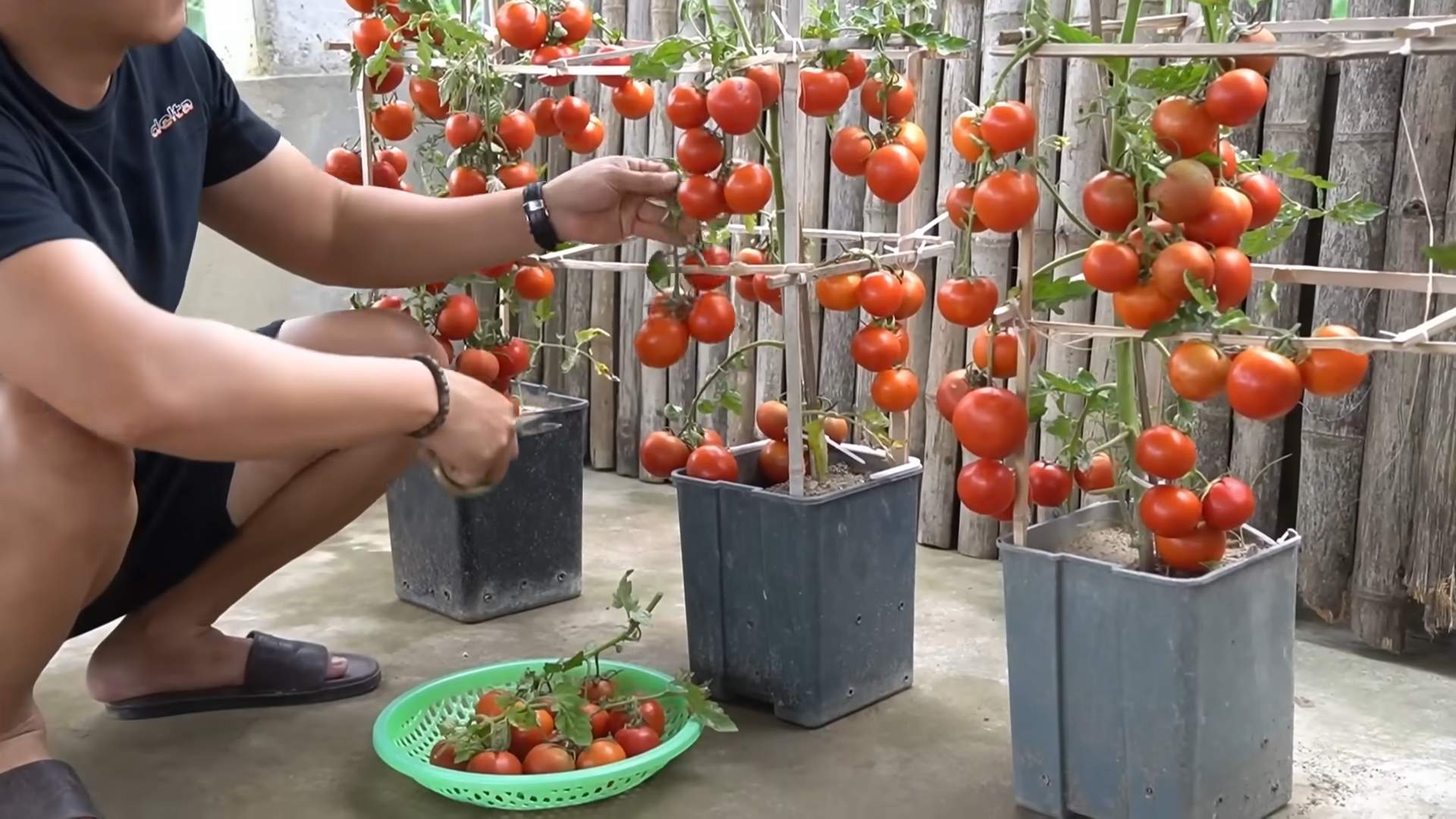
Water-Free Tomato Growing: A DIY Guide to Thriving Tomatoes with Minimal Watering
Hey there, fellow gardening enthusiasts! Are you tired of constantly lugging watering cans to your tomato plants, especially during those scorching summer months? Or maybe you live in an area with water restrictions and are looking for a more sustainable way to grow delicious, juicy tomatoes? Well, you’ve come to the right place! I’m going to share my tried-and-true method for growing tomatoes with minimal to no watering after the initial planting. Yes, you read that right – water-free (or almost water-free) tomato growing!
This method focuses on creating a self-sustaining environment for your tomato plants, allowing them to thrive even in dry conditions. It’s all about preparing the soil properly and utilizing the power of deep planting and mulching. So, grab your gardening gloves, and let’s get started!
Understanding the Principles Behind Water-Free Tomato Growing
Before we dive into the step-by-step instructions, let’s quickly understand the core principles that make this method work:
* Deep Planting: Planting your tomato seedlings deep encourages them to develop a more extensive root system. This allows the plants to access moisture deeper in the soil, where it’s less likely to evaporate.
* Soil Amendment: Amending the soil with plenty of organic matter, like compost and well-rotted manure, improves its water-holding capacity. This acts like a sponge, retaining moisture for longer periods.
* Heavy Mulching: A thick layer of mulch acts as a barrier, preventing water from evaporating from the soil surface. It also helps to suppress weeds, which compete with your tomato plants for water and nutrients.
* Choosing the Right Varieties: Some tomato varieties are naturally more drought-tolerant than others. Opting for these varieties will increase your chances of success with water-free growing.
Materials You’ll Need
Before we get our hands dirty, let’s gather all the necessary materials. Here’s what you’ll need:
* Tomato seedlings (choose drought-tolerant varieties if possible)
* Compost (lots of it!)
* Well-rotted manure (optional, but highly recommended)
* Bone meal or rock phosphate (for healthy root development)
* All-purpose organic fertilizer (optional, for an extra boost)
* Mulch (straw, hay, wood chips, or shredded leaves)
* Shovel or garden trowel
* Gardening gloves
* Watering can (for initial watering)
* Measuring tape or ruler
Step-by-Step Instructions: Planting Your Water-Free Tomatoes
Okay, let’s get to the fun part! Follow these steps carefully to ensure your tomato plants get the best possible start.
1. Choose the Right Location: Select a sunny spot in your garden that receives at least 6-8 hours of direct sunlight per day. Tomatoes thrive in full sun, so this is crucial for their growth and fruit production. Also, make sure the soil drains well. Avoid areas where water tends to pool after rain.
2. Prepare the Soil: This is arguably the most important step in water-free tomato growing. You need to create a soil environment that can retain moisture and provide your plants with the nutrients they need.
* Dig a hole that’s much larger than you would normally dig for a tomato plant. I usually aim for a hole that’s about 18-24 inches deep and wide. This gives the roots plenty of room to spread out and access moisture.
* Remove the soil from the hole and set it aside.
* Now, it’s time to amend the soil. Mix the soil you removed from the hole with a generous amount of compost and well-rotted manure (if using). I usually aim for a 50/50 mix of soil and organic matter. The more organic matter, the better!
* Add a handful of bone meal or rock phosphate to the soil mixture. This will provide phosphorus, which is essential for healthy root development.
* If you want to give your plants an extra boost, you can also add a small amount of all-purpose organic fertilizer to the soil mixture. Follow the instructions on the fertilizer package carefully.
3. Deep Planting: Now comes the deep planting! This is what sets this method apart from traditional tomato planting.
* Remove the lower leaves from your tomato seedling, leaving only the top few sets of leaves. This is important because the buried stem will develop roots, and you don’t want any leaves rotting underground.
* Carefully place the tomato seedling in the hole, burying the stem as deep as possible. You can bury up to two-thirds of the stem, leaving only the top few sets of leaves above ground.
* Backfill the hole with the amended soil mixture, gently patting it down around the plant.
4. Water Thoroughly: After planting, water the tomato plant thoroughly. This is the only time you’ll need to water it (unless you experience an unusually long period of drought). The initial watering helps to settle the soil and encourages the roots to start growing.
5. Mulch Heavily: Once the water has soaked in, apply a thick layer of mulch around the base of the plant. I recommend using straw, hay, wood chips, or shredded leaves. The mulch should be at least 4-6 inches thick.
* The mulch will help to retain moisture in the soil, suppress weeds, and regulate soil temperature.
* Make sure to keep the mulch a few inches away from the stem of the plant to prevent rot.
6. Provide Support: As your tomato plant grows, it will need support to prevent the stems from breaking under the weight of the fruit. You can use stakes, cages, or trellises to provide support.
* Install the support system as soon as possible after planting to avoid disturbing the roots later on.
* Tie the stems of the plant to the support system as needed, using soft twine or plant ties.
Troubleshooting and Tips for Success
Even with the best preparation, you might encounter some challenges along the way. Here are some common issues and how to address them:
* Wilting Leaves: If you notice your tomato plant’s leaves wilting, especially during the hottest part of the day, it could be a sign of stress. However, don’t panic! This is normal, especially during the first few weeks after planting. The plant is still adjusting to its new environment. If the leaves are still wilted in the evening, then it might be a sign of underwatering. In that case, give the plant a deep watering.
* Blossom End Rot: Blossom end rot is a common problem in tomatoes, caused by a calcium deficiency. It’s characterized by a dark, leathery spot on the bottom of the fruit. To prevent blossom end rot, make sure your soil is rich in calcium. You can add bone meal or crushed eggshells to the soil. Also, avoid overwatering or underwatering, as this can interfere with calcium uptake.
* Pests and Diseases: Keep an eye out for common tomato pests and diseases, such as aphids, tomato hornworms, and early blight. Take action promptly to prevent these problems from spreading. You can use organic pest control methods, such as insecticidal soap or neem oil.
* Choosing Drought-Tolerant Varieties: While this method works well for most tomato varieties, choosing drought-tolerant varieties will give you an extra edge. Some popular drought-tolerant varieties include ‘Roma’, ‘San Marzano’, ‘Celebrity’, and ‘Black Krim’.
* Monitor Soil Moisture: Even though this method aims for minimal watering, it’s still important to monitor the soil moisture. You can do this by sticking your finger into the soil near the base of the plant. If the soil feels dry to the touch, it’s time to water.
* Consider Your Climate: This method works best in climates with moderate rainfall. If you live in a very dry climate, you might need to supplement with occasional watering, especially during the hottest months.
* Don’t Over-Fertilize: While it’s important to provide your tomato plants with nutrients, avoid over-fertilizing. Too much fertilizer can actually harm the plants and make them more susceptible to pests and diseases.
* Be Patient: Growing tomatoes takes time and patience. Don’t get discouraged if you don’t see results immediately. With proper care and attention, your tomato plants will eventually reward you with a bountiful harvest.
Extra Tips for Maximizing Your Water-Free Tomato Harvest
Here are a few extra tips to help you get the most out of your water-free tomato growing experience:
* Companion Planting: Plant basil, marigolds, or other companion plants near your tomatoes. These plants can help to repel pests and attract beneficial insects.
* Pruning: Prune your tomato plants regularly to improve air circulation and encourage fruit production. Remove suckers (the small shoots that grow between the main stem and the branches) to direct the plant’s energy towards fruit development.
* Harvesting: Harvest your tomatoes
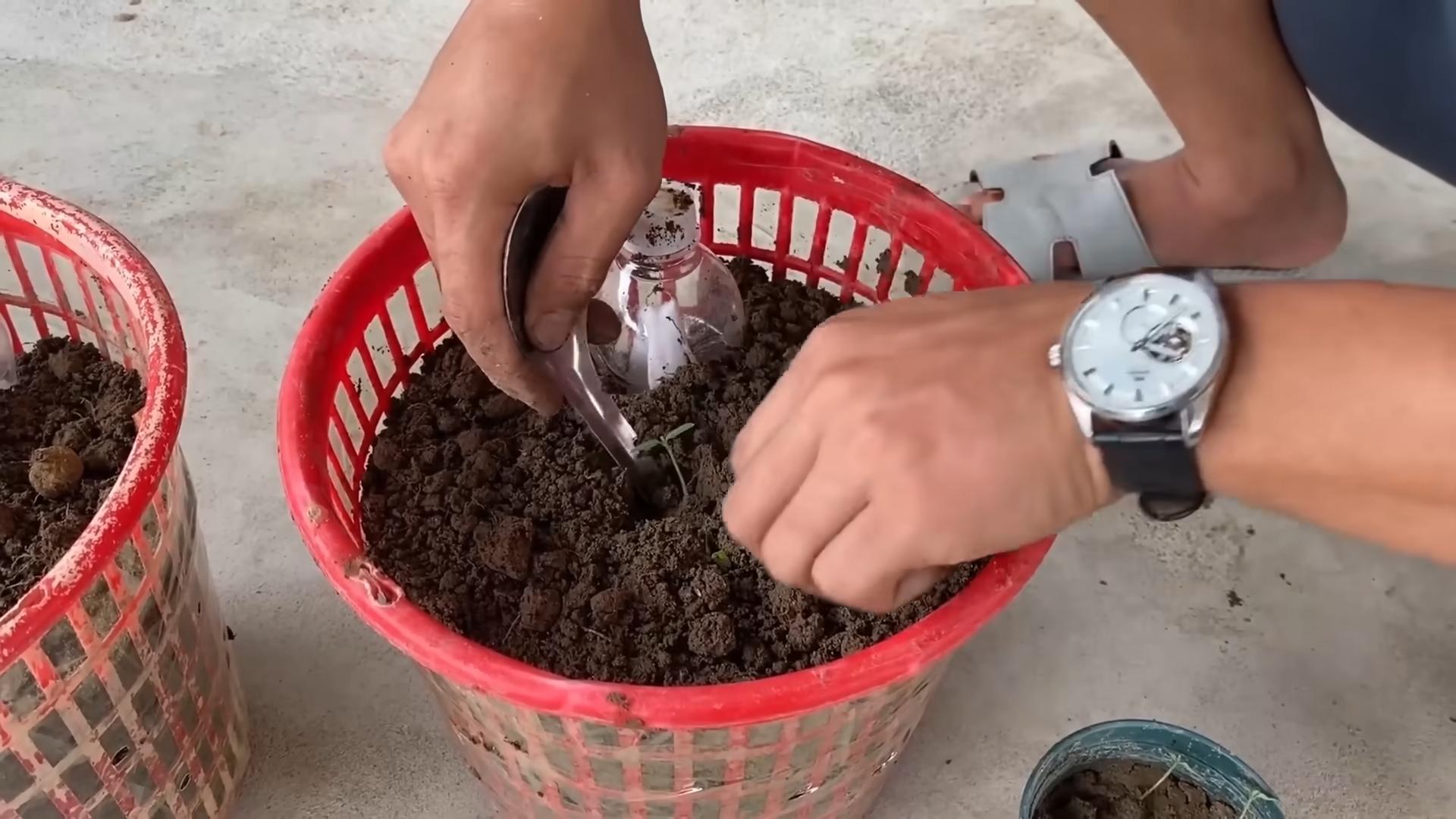
Conclusion
So, there you have it! The “Water-Free Tomato Growing” method isn’t just a quirky gardening experiment; it’s a game-changer for anyone looking to cultivate delicious, intensely flavored tomatoes with minimal effort and maximum sustainability. We’ve walked you through the simple steps, highlighting how this technique leverages the natural resilience of tomato plants and the power of a well-prepared growing medium to deliver exceptional results.
Why is this a must-try? Because it addresses several key challenges faced by tomato growers. First, it drastically reduces water consumption, making it an environmentally responsible choice, especially in regions prone to drought or water restrictions. Second, it minimizes the risk of common tomato diseases like blight, which often thrive in overly moist conditions. Third, and perhaps most importantly, it concentrates the sugars and flavors within the tomatoes, resulting in a taste that’s simply unparalleled. Imagine biting into a sun-ripened tomato bursting with sweetness and tang, a flavor so intense it transports you straight to a Mediterranean garden. That’s the promise of water-free tomato growing.
But the beauty of this method lies in its adaptability. Feel free to experiment with different tomato varieties. Heirloom tomatoes, known for their complex flavors, often thrive in these conditions. Consider adding a layer of mulch, such as straw or wood chips, to further conserve moisture and suppress weeds. You can also incorporate companion planting, such as basil or marigolds, to deter pests and enhance the overall health of your tomato plants. For those in cooler climates, starting your tomatoes indoors and transplanting them into their water-free beds after the last frost is a great way to get a head start on the growing season.
Don’t be afraid to tweak the soil composition to suit your local conditions. If your soil is heavy clay, amend it with plenty of organic matter, such as compost or aged manure, to improve drainage. If your soil is sandy, add peat moss or coconut coir to help retain moisture. The key is to create a well-draining, nutrient-rich environment that will support your tomato plants throughout their life cycle.
We understand that trying a new gardening technique can be daunting, but we wholeheartedly encourage you to give water-free tomato growing a try. The rewards – delicious, sustainable, and disease-resistant tomatoes – are well worth the effort. And remember, gardening is a journey of learning and experimentation. Don’t be discouraged if you encounter challenges along the way. Embrace the process, learn from your mistakes, and celebrate your successes.
We’re confident that you’ll be amazed by the results. So, grab your seeds, prepare your soil, and get ready to experience the joy of growing your own water-free tomatoes. And most importantly, we want to hear about your experience! Share your tips, tricks, and triumphs in the comments below. Let’s build a community of water-wise tomato growers and spread the word about this incredible technique. We can’t wait to see what you create!
Frequently Asked Questions (FAQ)
What exactly does “water-free” mean? Do I never water the plants at all?
The term “water-free” is a bit of a misnomer. It doesn’t mean you *never* water your tomato plants. It means you provide a thorough initial watering at planting time and then rely on the soil’s moisture retention and the plant’s natural ability to draw water from the surrounding environment. You’re essentially creating a self-sufficient ecosystem for your tomatoes. However, during prolonged periods of extreme drought or heat, you may need to supplement with occasional watering, especially if you notice signs of stress in your plants, such as wilting leaves. The key is to observe your plants carefully and water only when absolutely necessary.
What type of soil is best for water-free tomato growing?
The ideal soil for water-free tomato growing is a well-draining, nutrient-rich loam. This type of soil strikes a balance between retaining moisture and allowing excess water to drain away, preventing root rot. Amend your soil with plenty of organic matter, such as compost, aged manure, or leaf mold, to improve its structure, fertility, and water-holding capacity. Avoid heavy clay soils, which tend to retain too much water, and sandy soils, which drain too quickly. If you have either of these soil types, amend them extensively with organic matter to improve their properties. A slightly acidic to neutral pH (around 6.0 to 7.0) is also ideal for tomato growth.
What tomato varieties are best suited for this method?
While most tomato varieties can be grown using the water-free method, some are naturally more drought-tolerant and perform better than others. Heirloom varieties, such as ‘Black Krim,’ ‘Cherokee Purple,’ and ‘Brandywine,’ are often good choices due to their robust root systems and ability to withstand challenging conditions. Determinate varieties, which tend to be more compact and produce their fruit all at once, may also be well-suited for this method. Experiment with different varieties to see what works best in your local climate and soil conditions. Cherry tomatoes and grape tomatoes also tend to do very well.
How do I know if my tomatoes need watering?
The best way to determine if your tomatoes need watering is to check the soil moisture level. Insert your finger into the soil about 2-3 inches deep. If the soil feels dry to the touch, it’s time to water. Other signs that your tomatoes may need watering include wilting leaves, stunted growth, and blossom end rot (a calcium deficiency that can be exacerbated by inconsistent watering). However, avoid overwatering, as this can lead to root rot and other problems. When you do water, water deeply and thoroughly, allowing the water to soak into the soil.
Can I use this method in containers?
Yes, you can use the water-free method in containers, but it requires careful attention to soil selection and watering. Choose a large container (at least 15 gallons) with good drainage holes. Use a high-quality potting mix that contains a blend of peat moss, perlite, and vermiculite to provide good drainage and aeration. Water thoroughly at planting time and then monitor the soil moisture level closely. Containers tend to dry out more quickly than garden beds, so you may need to water more frequently, especially during hot weather. Consider using self-watering containers or adding water-retaining polymers to the potting mix to help conserve moisture.
What about fertilizer? How do I feed my tomatoes without watering?
Fertilizing your tomatoes without excessive watering is crucial for success. Incorporate slow-release fertilizer granules into the soil at planting time. These granules will gradually release nutrients over time, providing a steady supply of food for your plants. You can also use organic fertilizers, such as compost tea or fish emulsion, applied directly to the soil. Avoid using high-nitrogen fertilizers, as these can promote excessive foliage growth at the expense of fruit production. Focus on fertilizers that are rich in phosphorus and potassium, which are essential for flowering and fruiting.
What if I live in a very hot and dry climate?
If you live in a very hot and dry climate, you may need to take extra precautions to ensure the success of your water-free tomato growing. Choose tomato varieties that are known for their drought tolerance. Provide shade during the hottest part of the day, especially for young plants. Mulch heavily around the base of the plants to conserve moisture and suppress weeds. Consider using ollas (unglazed clay pots buried in the soil) to provide a slow and steady supply of water to the roots. Monitor your plants closely for signs of stress and water as needed.
How do I prevent blossom end rot with this method?
Blossom end rot is a common problem in tomatoes, especially when grown with inconsistent watering. To prevent blossom end rot, ensure that your soil is rich in calcium and that your plants receive consistent moisture. Amend your soil with lime or bone meal before planting to increase the calcium content. Water deeply and thoroughly when you do water, and avoid allowing the soil to dry out completely. Mulching around the base of the plants can also help to retain moisture and prevent fluctuations in soil moisture levels.
What about pests and diseases?
While water-free tomato growing can help to reduce the risk of some diseases, it’s still important to take precautions to protect your plants from pests and diseases. Choose disease-resistant tomato varieties. Practice good garden hygiene, such as removing diseased leaves and debris. Use organic pest control methods, such as insecticidal soap or neem oil, to control pests. Companion planting, such as planting basil or marigolds near your tomatoes, can also help to deter pests. Regularly inspect your plants for signs of pests or diseases and take action promptly to prevent them from spreading.


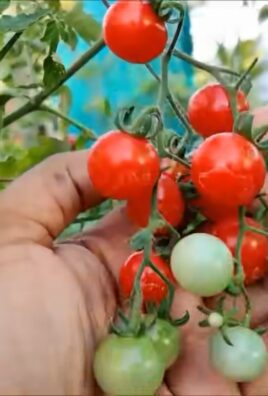
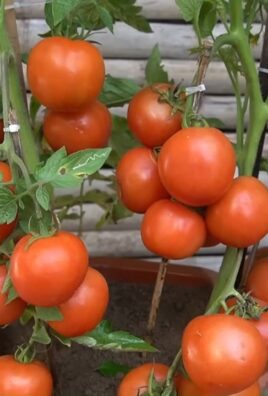
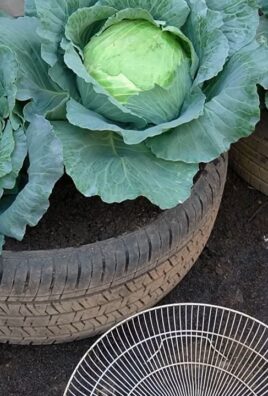
Leave a Comment